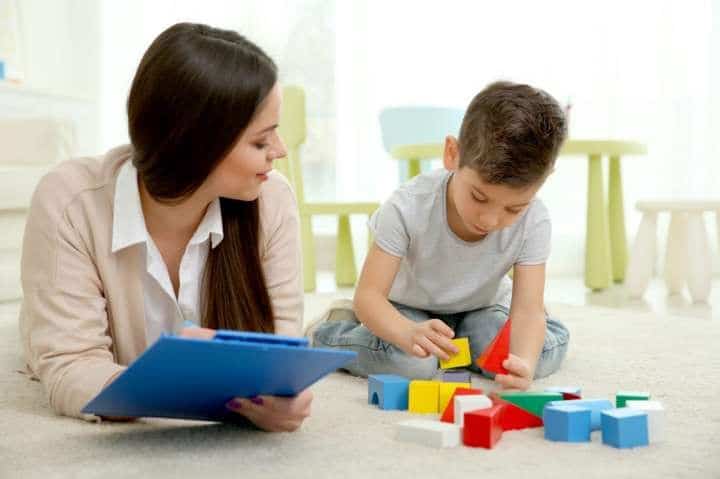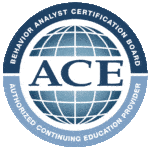ABA Therapy at Home, Benefits and What to Expect
Written by: Mariela Tapia-Hernandez, M.Ed., RBT
Reviewed by: Melanie Bren, M.Ed., BCBA, LBA

Applied behavior Analysis (ABA) is an evidence-based treatment for individuals diagnosed with Autism Spectrum Disorder. ABA is used to teach children with developmental delay complex skills such as communication, play, and social skills. Continuous data-driven research on ABA therapy has demonstrated the benefits of helping reduce challenging behaviors by implementing positive reinforcement. Therapy can take place in various settings such as schools, day centers, and homes.
Once a child has received a professional medical diagnosis, the family may begin to seek ABA services. One of the first steps is speaking with a board-certified behavior analyst (BCBA) to discuss the process of treatment for your child. A BCBA will be able to answer questions or concerns about ABA therapy.
Benefits of In-home ABA Therapy
You might be wondering what setting might work best for your child? Here are some advantages to receiving in-home ABA therapy.
A trained ABA therapist will come to your home to work with your child. This minimizes driving time and can easily be fitted into your everyday routine without interfering with your active schedule. In-home ABA therapy may be especially suitable for families who have issues with transportation.
Buying therapy materials is not necessary. The ABA therapist will use any toys that the child already has access to at home. Reinforcers can be various things, such as toys, preferred snacks, and/or social praise. Their ABA therapist will assess what the child likes during every session. Reinforcers are an essential part of ABA therapy, they are used to help reinforce good behavior and teach a variety of different skills- some examples include: communication, play, and peer interactions.
Certain behaviors may often occur in the home, for example, resisting instruction for daily tasks or problem behaviors with siblings during playtime. A BCBA will pinpoint why the problem behavior is happening, and they can develop an intervention strategy to treat the problem best as they occur. This allows for multiple opportunities to target the behavior of interest and help to teach appropriate behaviors.
During in-home sessions, an ABA therapist can observe everyday interactions between the child and family members in real-time. This allows the therapist to provide helpful feedback to parents on different approaches to help support treatment outside sessions.
Although in-home therapy can be for toddlers, teens, and adults with Autism, younger children from ages 2-5 who spend most of their time in a home environment can benefit the most. A BCBA makes sure to create a treatment plan that best suits the child’s needs, all in the comfort of their own home.
One of the advantages of In-home therapy is that any family member can get involved in their child’s learning development. All family members are recommended to be active participants, such as grandparents, caregivers, and siblings. ABA therapists are able to provide support to families who want to learn more about their child’s treatment and development. Family engagement has been demonstrated to increase the child’s progress when all members implement strategies outside sessions.
ABA therapists can guide families on how to implement ABA strategies to increase appropriate behaviors. Another great benefit of ABA at home is developing sibling relationships by working on age-appropriate skills such as playing together, sharing, and interacting. Peer interactions are also encouraged with friends or close relatives.
Examples of daily family interactions can be anywhere from sitting in the living room watching a movie as a family, to going out into the community together without problem behavior. Goals are always individual to each child based on their needs.
Independent Living Skills for Home
Personal hygiene skills are best taught during In-home ABA therapy because it allows for a natural environment to develop skills such as brushing teeth, washing hands, washing face, etc. When teaching daily living skills, these tasks are typically broken down into smaller steps, and reinforcement is provided after each step that is correctly accomplished. This process is repeated during every session until the child learns to complete all sequence steps independently.
To help teach those independent living skills, the therapist will use least to most prompting. Physical prompt includes a therapist standing behind the child and physically guiding their hands to help with steps they may hard time completing. The therapist will fade their prompts once a child is more confident; they may switch to gestural prompting such as pointing or touching items when they need help. The aim is for the child to be able to complete a task independently.
For early learners, in-home services can also follow daily routines such as toilet training, dressing, learning to tie shoes, etc. Parents can select times that work best. (Read A Parent’s Guide to Autism Spectrum Disorder here). Depending on the session time, your child can work on the morning routine- get dressed, eating breakfast, or nighttime routine- having dinner, undressing, and getting ready for bed. During in-home services, it is best to follow the family’s natural home pattern.
For adolescents and teens with autism, daily living skills can look a bit different. This may include learning how to organize their room, prepare meals, and learning how to communicate via mobile devices. Peer interaction can occur for teens through board games, video games, or social outings with friends. An ABA therapist will contrive situations for the teen to interact with others. Some goals may include learning to accept losing a game, initiating conversation with others and responding to peers’ non-verbal communication.
Starting In-home ABA Therapy
ABA Therapist will ask for the child’s favorite edibles (chips, candy, cookies, etc.) and toys for motivation and reinforce behavior. Using reinforcers will help the therapist pair and build rapport with the child. Once the child is comfortable and excited to work with their therapist, they begin to slowly incorporate demands. Some parents will limit certain toys, screen time, or snacks before sessions to create a more powerful incentive for completing tasks.
Once the family decides to begin in-home services, parents can select a designated work area. This can be any space in the house where a therapist will set up materials and activities to work 1:1 with the child. Having a workspace will help avoid distractions during skill acquisition.
While clinic therapy allows for a more controlled environment, home-therapy ensures that the child will be independent in their natural environment and their skills learned in the clinic are generalized into the home.
More ABA Therapy Resources
What does ABA Therapy for Toddlers Look Like?
What is Autism?
How Visual Aids Can Help Your Child Process Things
Date Posted:
September 20, 2021
Share this blog
Categories
Recent Blog Posts








